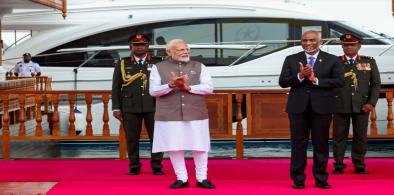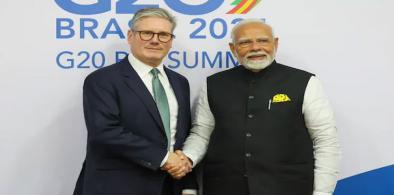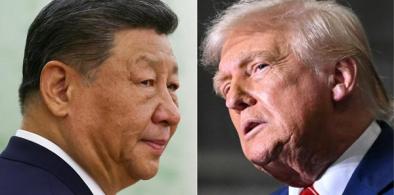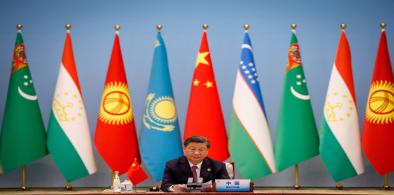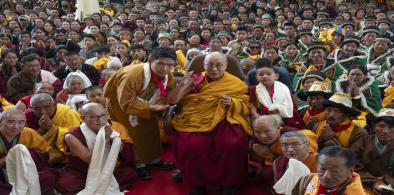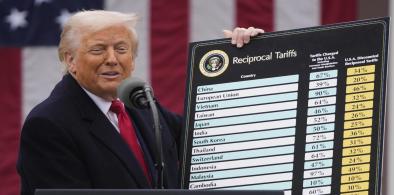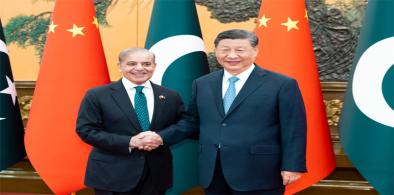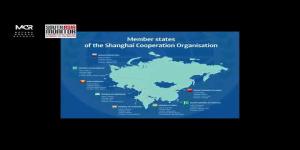Development diplomacy remains India’s strongest soft-power tool in the Indian Ocean. The contrast between India’s low-interest, grant-based infrastructure projects and China’s debt-heavy Belt and Road Initiative (BRI) has not gone unnoticed. The Maldivian pivot back to India is partly driven by this contras

Is A India–China War Possible? A Fragile Peace Will More Likely Hold
While low-level clashes may continue, the possibility of a large-scale conflict, as projected by recent U.S. intelligence reports, remains far-fetched. Both countries are acutely aware that they stand to lose far more than they can gain. Despite uneasy relations, several factors actively discourage conflict
China's Reactions To Terror Incidents: State And Social Media Echo Clear Bias For Pakistan
The two incidents in India and Pakistan over the course of a week have shown that the coverage of terrorism by the Chinese media ecosystem largely reinforces the state’s foreign policy narratives and preferences for alignment in South Asia. Pakistan emerges as a clear preference for the public, which is reinforced by commentators and opinion makers on non-state news media platforms.
China’s CPEC Extension To Afghanistan Has Security Implications For Region
CPEC 2.0 is expected to serve as a major leverage tool for China to access Afghanistan’s untapped natural resources and enhance connectivity to Pakistan and Central Asia. However, for Afghanistan, the initiative may be more of a challenge than an opportunity. Countries such as Sri Lanka and the Maldives have already faced severe economic consequences from poorly structured Chinese-funded projects.
China's New Great Game: How Beijing is Redrawing South Asian Geopolitics
China's rise has, in the consensus view of most international relations scholars, fundamentally changed South Asia. The old, India-centric region is gone. Pakistan has tied its future to Beijing, seeing China as its ultimate guarantor. Bangladesh has played a smart game, using Chinese money for national development while maintaining its "friendship-to-all" foreign policy. The Teesta project shows Dhaka's new confidence in following its own national interest. For India, the challenge is immense, as it must now compete for influence in its own backyard.
China’s 'Project of the Century' and its Implications for South Asian Ecological and Geopolitical Stability
It risks turning a bilateral infrastructure issue into a trilateral diplomatic flashpoint, where India would have to thereafter balance its upstream anxieties with downstream responsibilities. In this context, Beijing’s growing hydrological footprint is not only being viewed as a strategic challenge in New Delhi, but also as a potential disruptor of its regional diplomacy in South Asia.
India–UK Free Trade Agreement: A Blueprint for Forward-Thinking Global Commerce
The broader strategic ramifications of the India–UK FTA are profound. It strengthens bilateral cooperation in areas such as defence, technology, renewable energy, and education, reinforcing both countries’ strategic footprints in the Indo-Pacific region.
South Asian Nations Recalibrating Role, Balancing Trade Ties with US and China
China’s presence in South Asia has expanded considerably since the launch of the BRI in 2013. Beyond trade and infrastructure, it has emerged as a provider of military hardware and a key influencer in education, media, and policy discourse. China's outreach in smaller South Asian countries is multifaceted, ranging from party-to-party diplomacy to soft power tools like Buddhist cultural ties and influence operations.
Is India Upping The Ante on Tibet?
In a media interview, Khandu strongly refuted Beijing’s territorial claims and emphasized Arunachal’s historical relationship with Tibet, a nation forcibly occupied by China in the 1950s. He pointed out that Arunachal Pradesh shares roughly 1,200 km of border with Tibet, around 100 km with Bhutan, and 550 km with Myanmar. His remarks were a pointed rebuttal to China’s repeated claims over Arunachal Pradesh, including renaming it as “Zangnan” or “South Tibet.”
Dalai Lama's Declaration A Turning Point For Tibetans
The Tibetan diaspora must now take the lead in mobilizing global opinion. The Dalai Lama has issued a clarion call — not only to uphold Tibet’s spiritual and cultural values, but to defend the right of a people to decide their own destiny.
Why is India equivocating on the Dalai Lama's succession?
There are multiple reasons why the MEA doesn’t dare to say “no one except Dalai Lama can decide his successor”, some of which could include External Affairs Minister S Jaishankar fears getting snubbed during his coming visit to Beijing
China’s Deepening Strategic Engagement In Central Asia Has Global Implications
China’s strategy for building a regional order in Central Asia converges with its playbook in sub-regions across the Global South, like Latin America, Africa and South Asia. The substance and optics of its Latin America Summit and Xi Jinping’s tour of Southeast Asia in the last few months reflect this strategy.
Dalai Lama's much-anticipated announcement throws a challenge to China
Contrary to the longstanding popular expectation that the Dalai Lama could announce an interim successor until a reincarnation is determined after his death, he has chosen the option that sets the stage for a long-term conflict between Beijing and the institution of the Dalai Lama. It is clear now that the next Dalai Lama will be from outside China and Tibet.
A Fragile Thaw: India-China Relations in Competitive Coexistence
While SCO saw ministers invoke "mutual trust" and “overall development” in public, Chinese actions reveal a twin-track approach toward India—maintaining diplomatic channels and economic engagement in public, while simultaneously tightening its grip on sectors where India remains dependent.
ASEAN Unprepared For Geopolitical Crises: Region's Future Lies Not in China, but in US
China's geographic proximity and growing power remain the core reasons ASEAN clings to its long-standing hedging and neutrality strategy. Fear of retaliation—whether economic or military—has deterred ASEAN from adopting a firm position against Beijing, which could compromise the region’s economic survival.
China now even more firmly Pakistan’s benefactor, with ramifications beyond region
The Chinese making inroads into Pakistan for a while now may also be a significant factor behind President Donald Trump not taking an unambiguously supportive position towards India. Trump’s comments have been calibrated to achieve equivalence between India and Pakistan and quite strikingly handed Islamabad some bragging rights by offering to intervene in resolving the Kashmir issue.
Why Tariffs Aren’t the Answer: The U.S. Needs a Smarter Path to Manage Its Debt Load, not Quick Fixes
Over the past 40 years, the U.S. has transitioned from an industrial to a consumption-driven economy. Manufacturing, which contributed about 25% to GDP in 1970, now accounts for just 10%. The outsourcing of production to China, Mexico, Vietnam, and others has led to the loss of nearly 5 million factory jobs between 2000 and 2020 alone.
Japan’s Investment Pivot: Destination India Overtakes China Amid Escalating US-China Trade Tensions
A landmark event in 2023 was the MoU with Japan’s Rapidus Corporation to establish semiconductor manufacturing in India. Backed by Japanese giants like Sony, Toyota, Kioxia, NEC, NTT, and MUFG Bank, this move could be a game-changer for India’s electronics ecosystem, which currently lacks indigenous chip production.
After Pahalgam: Why China Must Rethink Its Silence on Terrorism in South Asia
The Pahalgam tragedy, coupled with Pakistan’s public admission of its role in fostering terrorism, presents such a moment. China must rise to the occasion—not by choosing sides, but by choosing peace. It must move from silence to strategy, and from passive balancing to active peace-building.





